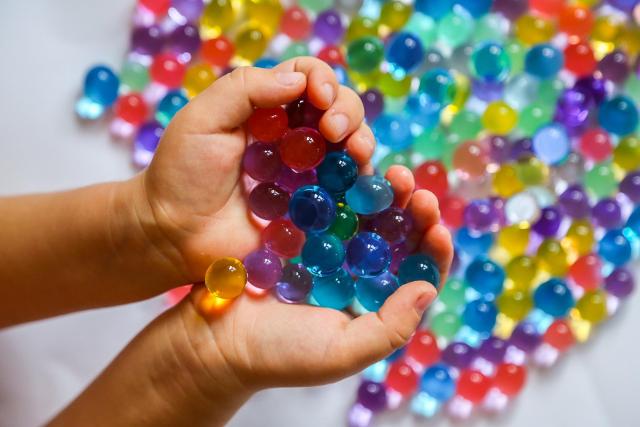 A Maine mother is warning other parents after her 10-month-old daughter nearly died after accidentally swallowing a toy.
A Maine mother is warning other parents after her 10-month-old daughter nearly died after accidentally swallowing a toy.
Get The Latest News!
Don't miss our top stories and need-to-know news everyday in your inbox.
 Folichia Mitchell tells Good Morning America that her daughter wound up in the hospital after swallowing a water bead, a toy meant for her eight-year-old son. The tactile toys are marble-sized and water-absorbing. They are often used to reduce stress and anxiety while helping to develop focus and attention. The National Poison Control Center and the American Academy of Pediatrics say water beads can expand inside a person and cause a life-threatening intestinal blockage.
Folichia Mitchell tells Good Morning America that her daughter wound up in the hospital after swallowing a water bead, a toy meant for her eight-year-old son. The tactile toys are marble-sized and water-absorbing. They are often used to reduce stress and anxiety while helping to develop focus and attention. The National Poison Control Center and the American Academy of Pediatrics say water beads can expand inside a person and cause a life-threatening intestinal blockage.
The incident is a reminder to know the signs of poisoning and choking and the steps to reverse the effects of each, says Aminat Ogun, MD, a family medicine physician at OSF HealthCare in Champaign, Illinois.
“Make sure there are no loose coins around - no small toys they can pick up and swallow,” Dr. Ogun advises as a first step. The Consumer Product Safety Commission has a list of recalled products.
Food should be cut into small bites for kids. Chemicals, like bleach used for cleaning, should be capped and stored out of a child’s reach. Cabinet locks add an extra layer of protection.
If your child does ingest something they’re not supposed to, Dr. Ogun advises taking an ambulance to the Emergency Department of your local hospital. Health care providers will assess the child, consulting with the poison control center if necessary, and decide what to do. One option is to pump the poison out of the child’s stomach. If it’s a small object that doesn’t present a grave threat, Dr. Ogun says doctors may see if it will pass naturally in a bowel movement.
Some children may swallow a poisonous liquid and not say anything, perhaps because they don’t even know the seriousness of what they did. In this case, Dr. Ogun says to watch for changes in your child’s health, like vomiting and lethargy, and see a doctor right away.
If a child is choking, Dr. Ogun says there are life-saving steps you can take at home.
For children under one, Dr. Ogun says to lay the child face down on your lap and pat their back five times. Then turn the child over and repeat the pats on their chest.
For older kids, perform the Heimlich maneuver. Dr. Ogun says stand behind the person, wrap one arm around them and place your hand in a fist between their belly button and the bottom of their sternum. Lay your other hand flat on the fist. Then make upward thrusts.
If you’re alone, you can perform thrusts on yourself or thrust your upper abdomen against the back of a chair or the edge of a counter.
Local first responders or healthcare organizations may offer training on these life-saving techniques.
One word of caution: “Do not put your hand in the child’s mouth to try to get the object out,” Dr. Ogun says. “That could make it worse.”
If these steps don’t dislodge the object and get the child breathing again within a couple minutes, call an ambulance and get to the Emergency Department.
“If the person is turning blue, not able to speak or gasping, those are signs to go to the Emergency Department,” Dr. Ogun says.
More like this:
